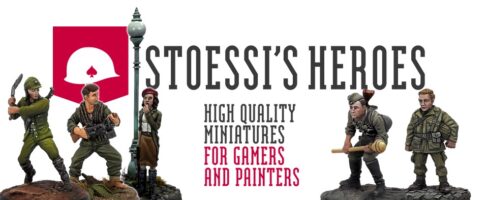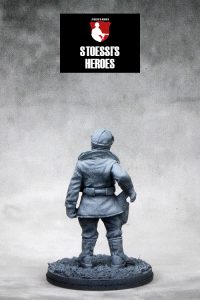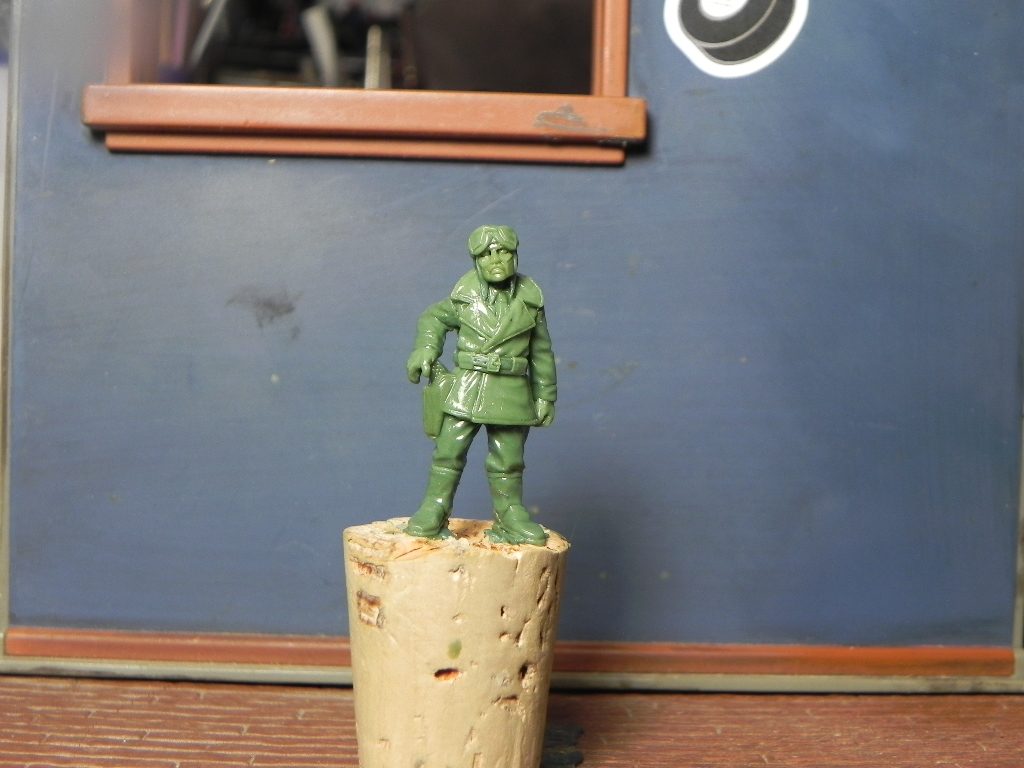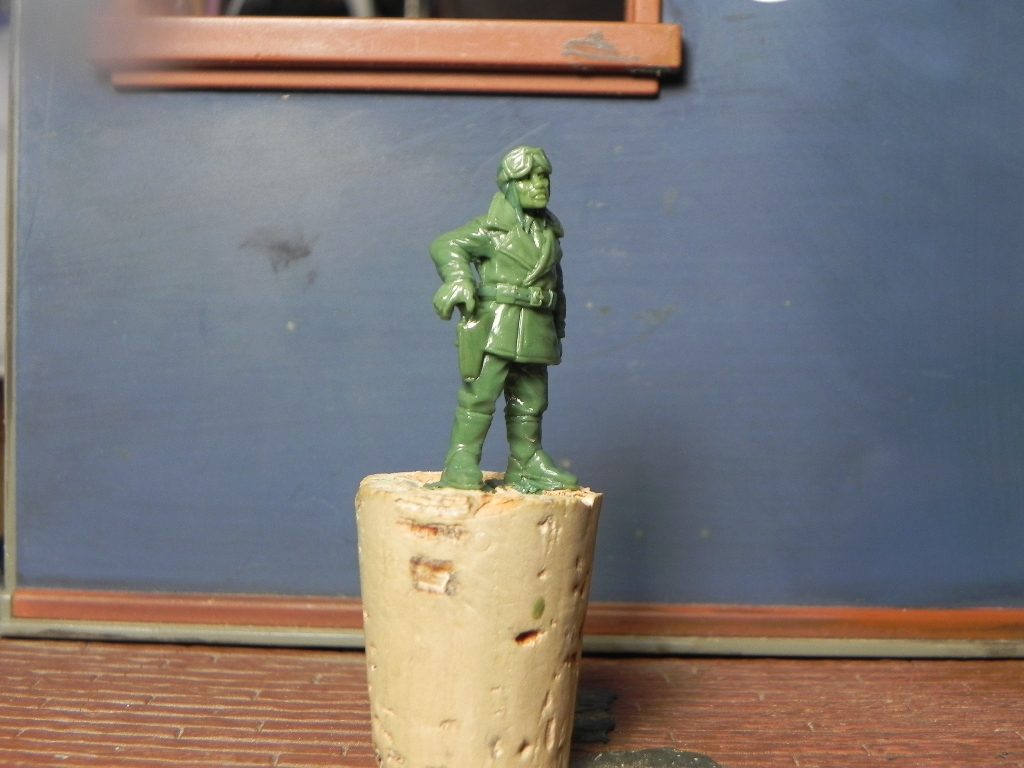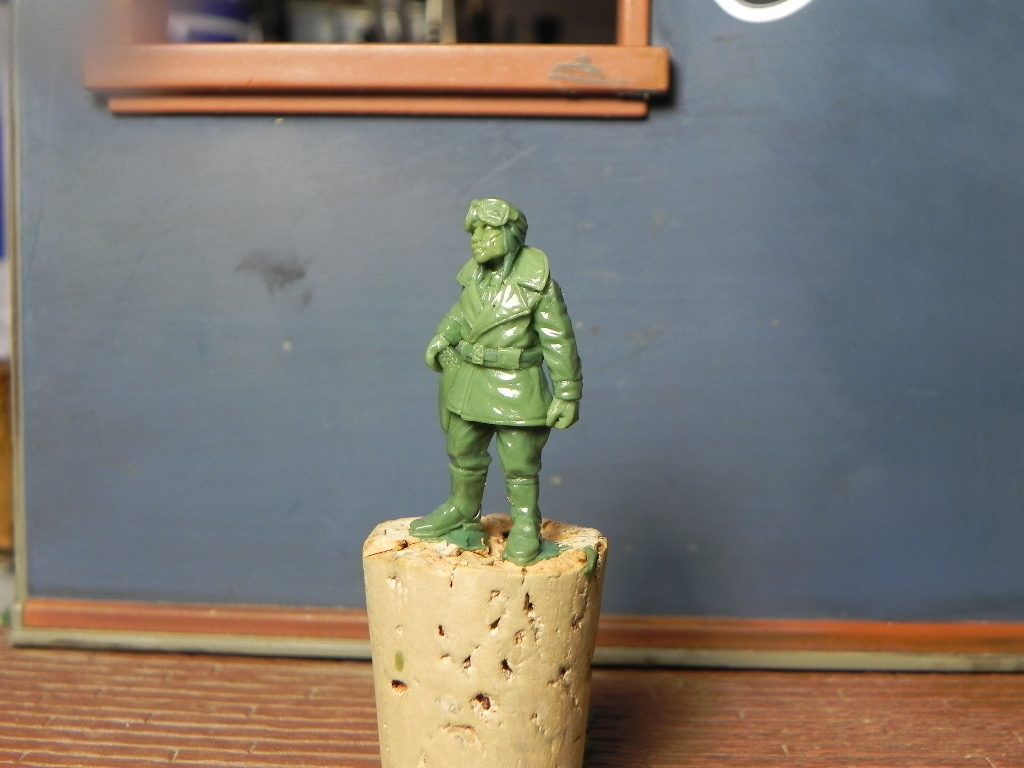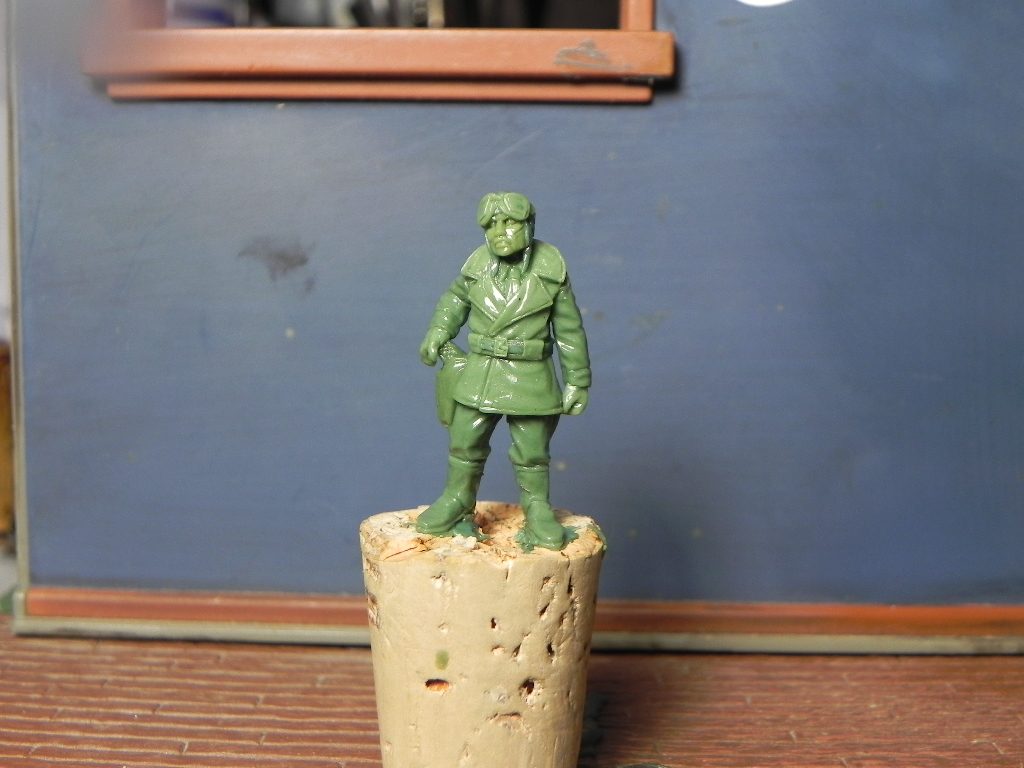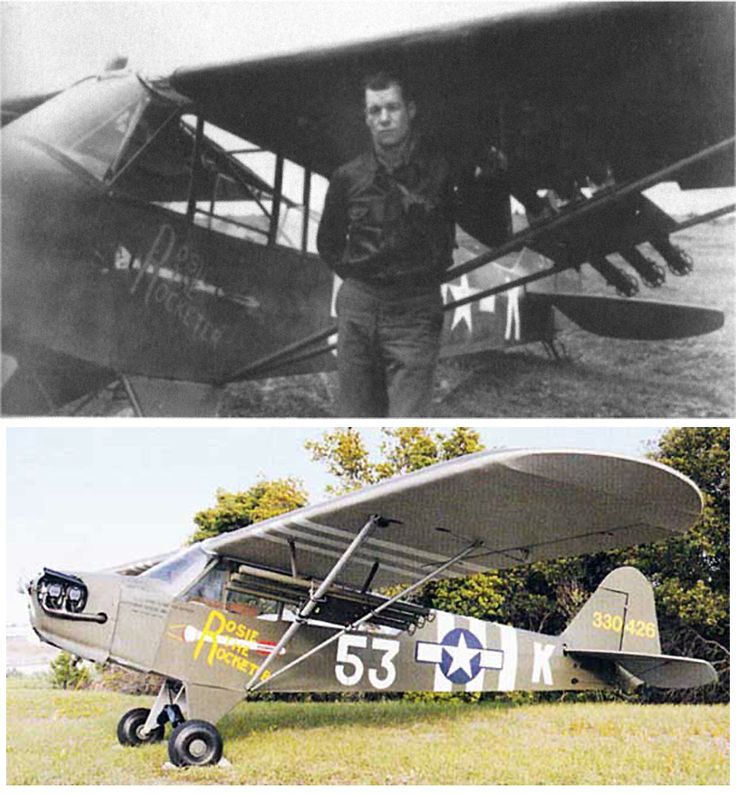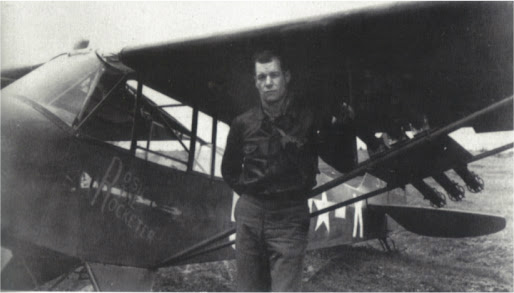
Charles “Bazooka Charlie” Carpenter was famous for his usage of this plane against tanks and armored vehicles. Armed with Bazookas, he was credited with the destruction of 14 tanks (Two Tigers), several armored vehicles, and killing dozens of German soldiers.
Here is the miniature that Stoessi’s Heroes is releasing to honour Charles Carpenter:
Let’s talk a bit more about this man they called “The Mad Major”:
Promoted to the rank of major in 1944, Carpenter was assigned to combat duty in France with the 1st Bombardment Division. Upon arrival he was assigned an L-4H and assigned to fly artillery support and reconnaissance missions in support of the U.S. 4th Armored Division, part of General George S. Patton’s U.S. Third Army. The Piper L-4H was a military version of the Piper J-3 Cub, a small fabric-covered, unarmored two-seat aircraft.
Inspired by other L-4 pilots who had installed bazookas as anti-tank armament on their planes, Carpenter first attached two M1 rocket launchers (bazookas) to the underwing struts of his L-4H, which he named Rosie the Rocketer. After some experimenting, Carpenter would later add two more rocket launchers, then two more for a total of six bazookas, three mounted just above each set of lift struts per side, just outboard of the L-4’s jury struts.
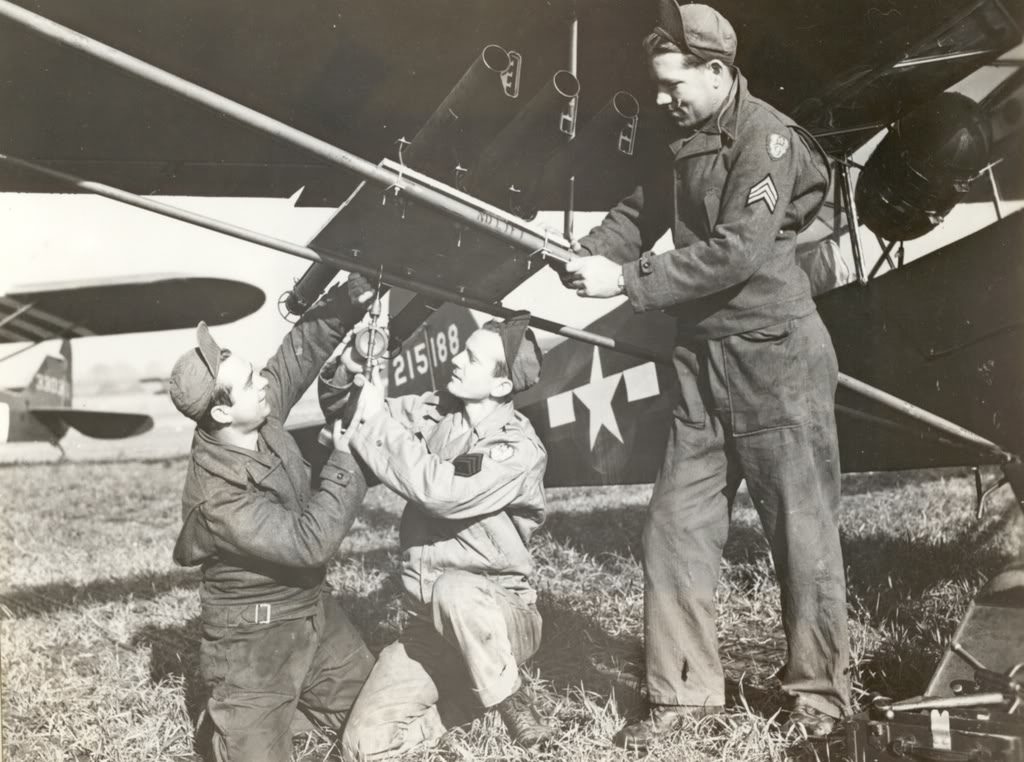
During the 1944 Allied offensive in France, Carpenter continually improved the armament on Rosie the Rocketer, eventually installing six improved type M9 bazookas using the new M6A3 HEAT rocket, which could penetrate 3.9 inches (99 mm) of armor plate at a 30° impact angle. Each trio of M9 launch tubes was mounted side-by-side atop a plate in the same general locations as the earlier M1 bazookas’ launch tubes had been mounted. Even the heaviest German tanks such as the Pzkpf Tiger Ausf. B or King Tiger, the Nazis’ most dangerous tank, used thinner 40 mm or 45 mm armor on the tops of their turrets and hull superstructure, which the M6A3 bazooka rocket warhead could easily penetrate. As before, a battery of three M9 launchers was installed side-by-side on each underwing strut of his L-4, with an overall weight (when loaded with rockets) of some 106 pounds, not counting the weight of the mounting brackets and firing controls. By using an electrical firing mechanism connected to pushbutton controls on a cockpit-mounted panel, Carpenter could fire his six rockets either individually or salvo all six at one time. He once told a reporter that his idea of fighting a war was to “attack, attack and then attack again.”
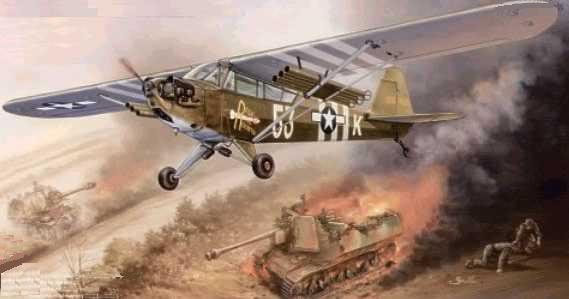
Initially, Carpenter faced little return ground fire on his missions. German forces were normally reluctant to fire on the L-4 and similar light planes without offensive armament, as doing so would give away their position and cause the plane’s occupants to call in artillery fire or fighter-bomber support. Moreover, as long as the pilot, gas tank or engine was not hit, most small arms fire would not bring down an L-4, since the plane had such a light wing loading (an excess of wing and control surface area for its weight) of 7.5 pounds per square foot. However, as Carpenter’s bazooka attacks became more well known, German ground fire increased in intensity. Even German infantry would join in, attempting to down Carpenter’s L-4 with rifles and machine pistols. On one mission, as Carpenter banked steeply around a tall tree in order to get a bazooka shot at a German tank, German infantrymen opened up on him with machine pistols, forcing him to turn for cover behind another tree before escaping with several 9mm bullet holes in one wing. Carpenter told a Stars and Stripes correspondent that the “word must be getting around to watch out for Cubs with bazookas on them. Every time I show up now they shoot with everything they have. They never used to bother Cubs. Bazookas must be bothering them a bit.”
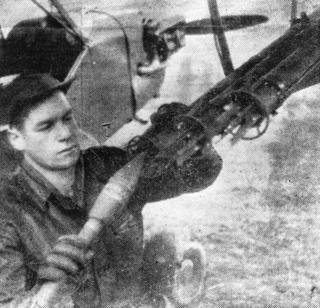
One of Carpenter’s longest missions occurred on September 20, 1944 during the Battle of Arracourt near Nancy, France, when German armored forces launched a sudden tank attack on the headquarters component of the 4th Armored Division’s Combat Command A, in the process trapping or pinning down several 4th AD support units. Major Carpenter took to the air with his armed L-4, but owing to a heavy fog which obscured the ground below him, was unable to locate the enemy. Around noon, the fog began to lift, and Carpenter spotted a company of German Panther tanks and armored cars advancing towards Arracourt. Diving through a barrage of German ground fire in a continuing series of attacks against the German formation, Carpenter fired all of his bazooka rockets. Returning to base to reload, Carpenter flew two more sorties that afternoon, firing no fewer than sixteen bazooka rockets at the advancing enemy. Rosie the Rocketer was later credited with immobilizing two German tanks and several armored cars, while killing or wounding a dozen or more enemy soldiers. Carpenter’s attacks also forced the remaining Panther tanks in the formation to retreat, in the process enabling a trapped 4th Armored water point support crew, who had witnessed Carpenter’s actions that day, to escape capture and destruction. “Some people around here think I’m nuts,” Major Carpenter was quoted as saying, “but I just believe that if we’re going to fight a war we have to get on with it sixty minutes an hour and twenty-four hours a day.”
The Associated Press reporter Wes Gallagher, in a 1945 article in Liberty Magazine, concluded that the major was “a legend in an outfit where reckless bravery is commonplace.” By war’s end, Major Carpenter had destroyed several German armored cars and knocked out 14 German tanks (he would be officially credited with six tanks destroyed, including two Tiger I tanks), and had also participated in several ground combat actions. Never having received as much as a scratch from enemy fire, he acquired still another nickname, “The Lucky Major”. In recognition of his achievements, Carpenter was promoted to lieutenant colonel and awarded the Silver Star with Oak Leaf Cluster, the Bronze Star, and the Air Medal with Oak Leaf Cluster.

